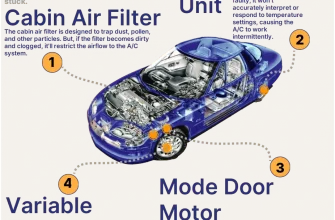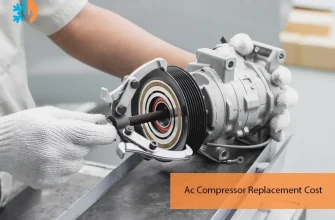The Manifold Absolute Pressure (MAP) sensor plays a vital role in the performance of modern vehicles. As an essential component of the engine management system, it measures the pressure inside the intake manifold, providing crucial data to the engine control unit (ECU). When the MAP sensor malfunctions, it can lead to a myriad of symptoms that affect both the performance of the vehicle and its overall efficiency. In this article, we will delve into the common symptoms of a MAP sensor malfunction and the importance of addressing these issues promptly.
What is a MAP Sensor?
The MAP sensor is designed to monitor the pressure of the air entering the engine. This information is used by the ECU to calculate the appropriate fuel-air mixture, optimize ignition timing, and ensure efficient combustion. A properly functioning MAP sensor is essential for maintaining engine performance and fuel efficiency.
Common Symptoms of MAP Sensor Malfunction
Identifying the symptoms of a MAP sensor failure can be the key to preventing more significant engine problems. Here are some of the most common signs that your vehicle may be experiencing a MAP sensor malfunction:
- Check Engine Light: One of the first indicators of a malfunctioning MAP sensor is the activation of the check engine light on the dashboard. This light is triggered by the ECU detecting irregular sensor readings.
- Poor Fuel Economy: As the MAP sensor fails to provide accurate data, the ECU may not adjust the fuel mixture correctly, leading to increased fuel consumption and reduced efficiency.
- Engine Stalling: A faulty MAP sensor can cause the engine to stall unexpectedly, especially during idling or low-speed driving. This can be both inconvenient and dangerous;
- Rough Idle: If the MAP sensor is malfunctioning, the engine may experience a rough idle, characterized by fluctuations in RPM and a shaky engine performance.
- Loss of Power: A defective MAP sensor can lead to a noticeable loss of power when accelerating, as the engine struggles to maintain the correct fuel-air mixture.
- Hard Starting: Difficulty starting the engine can also be a symptom of a MAP sensor issue, as the ECU may not be able to determine the proper fuel delivery needed for ignition.
Understanding the Causes of MAP Sensor Failure
The causes of MAP sensor failure can vary, but common issues include:
- Dirt and Contamination: Accumulation of dirt, dust, or oil on the sensor can lead to incorrect readings.
- Electrical Issues: Problems with the wiring or connectors associated with the MAP sensor can disrupt its function.
- Sensor Wear and Tear: Like any component, MAP sensors can wear out over time due to heat and vibration.
- Vacuum Leaks: A vacuum leak in the intake manifold can cause incorrect pressure readings, leading the sensor to malfunction.
Diagnosis and Repair
Diagnosing a MAP sensor issue typically involves using an OBD-II scanner to read trouble codes and monitor real-time data from the sensor. Additionally, visual inspection of the sensor and its wiring can help identify any physical damage. If a malfunction is confirmed, it’s crucial to replace the faulty sensor to restore engine performance and efficiency.
The MAP sensor is an essential component of your vehicle’s engine management system. Recognizing the symptoms of a malfunction can help you take timely action to prevent further damage to your engine. If you notice any of the symptoms discussed, it’s advisable to consult a qualified mechanic to ensure your vehicle remains in optimal condition. Regular maintenance and prompt attention to warning signs can significantly enhance your vehicle’s performance and longevity.










Excellent insights into how a faulty MAP sensor affects vehicle performance. Thanks for sharing!
Great breakdown of the MAP sensor
This article is very helpful! Understanding these symptoms can save you a lot of trouble down the road.
I appreciate how detailed this article is. The information about fuel economy was particularly enlightening.
I had no idea how critical the MAP sensor was until I read this. The symptoms listed are spot on!
This article provides a clear and concise explanation of the MAP sensor